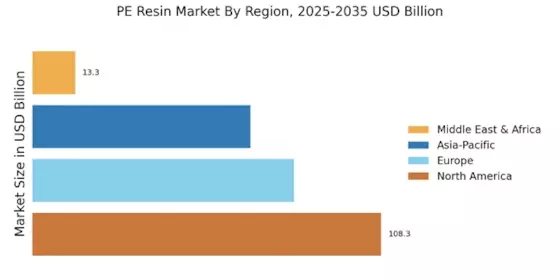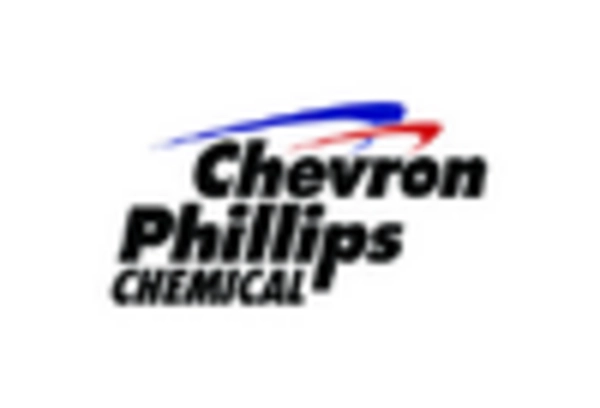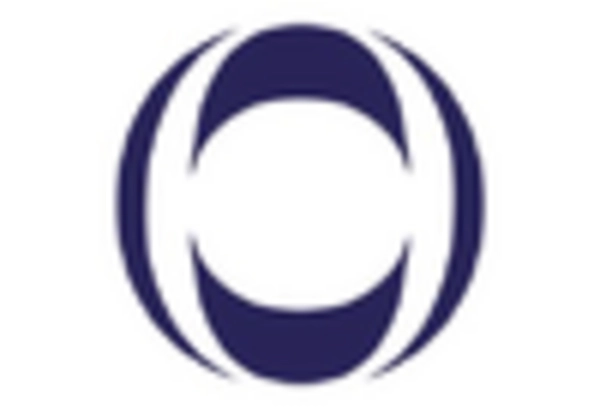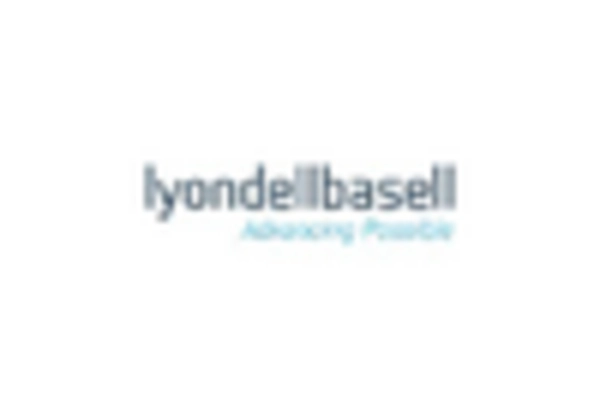Growth in Construction Activities
The PE Resin Market is significantly influenced by the expansion of construction activities across various regions. As urbanization accelerates, the demand for construction materials, including polyethylene products, is on the rise. In 2025, the construction sector is expected to contribute approximately 25 percent to the overall PE resin market. Polyethylene is favored for its versatility, resistance to moisture, and durability, making it ideal for applications such as insulation, piping, and geomembranes. Furthermore, government initiatives aimed at infrastructure development are likely to bolster this trend, suggesting a sustained growth trajectory for the PE Resin Market in the coming years.
Increased Automotive Applications
The PE Resin Market is experiencing growth due to the rising adoption of polyethylene in the automotive sector. As manufacturers seek to reduce vehicle weight and enhance fuel efficiency, polyethylene's lightweight properties make it an attractive option. In 2025, the automotive segment is projected to account for a notable share of the PE resin market, driven by innovations in automotive design and manufacturing. Polyethylene is utilized in various applications, including interior components, fuel tanks, and exterior parts, due to its durability and resistance to chemicals. This trend indicates a promising future for the PE Resin Market, as automotive manufacturers increasingly turn to polyethylene to meet regulatory standards and consumer expectations.
Rising Demand in Packaging Sector
The PE Resin Market is experiencing a notable surge in demand, particularly from the packaging sector. This growth is driven by the increasing need for lightweight, durable, and cost-effective materials. In 2025, the packaging segment is projected to account for over 40 percent of the total PE resin consumption. The shift towards flexible packaging solutions, which utilize polyethylene due to its excellent barrier properties, is a key factor. Additionally, the rise in e-commerce and online shopping has further propelled the demand for packaging materials, as companies seek to ensure product safety during transit. This trend indicates a robust future for the PE Resin Market, as manufacturers adapt to meet the evolving needs of consumers and businesses alike.
Expansion of Consumer Goods Market
The PE Resin Market is benefiting from the expansion of the consumer goods market, which is characterized by a growing demand for durable and versatile packaging solutions. As consumer preferences shift towards convenience and sustainability, polyethylene products are increasingly favored for their lightweight and recyclable nature. In 2025, the consumer goods sector is expected to represent a substantial portion of the PE resin market, driven by the proliferation of packaged goods and the need for effective product protection. This trend suggests that the PE Resin Market will continue to thrive, as manufacturers innovate to meet the diverse needs of consumers while adhering to sustainability practices.
Innovations in Recycling Technologies
The PE Resin Market is witnessing a transformative phase due to advancements in recycling technologies. As sustainability becomes a priority, innovative recycling methods are being developed to enhance the circular economy for polyethylene products. In 2025, it is anticipated that recycled PE resin will constitute a significant portion of the market, driven by both consumer demand and regulatory pressures. Companies are increasingly investing in technologies that allow for the efficient recycling of polyethylene, thereby reducing waste and promoting environmental responsibility. This shift not only supports sustainability goals but also opens new avenues for growth within the PE Resin Market, as recycled materials become more widely accepted and utilized.


















Leave a Comment